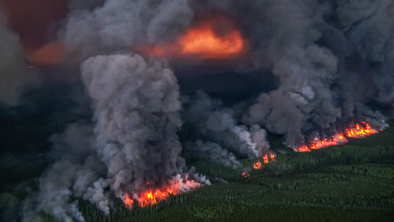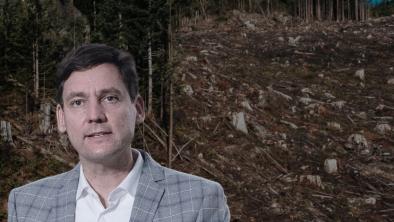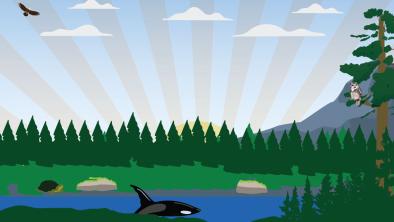Tribal Parks - Wild Times
Sunday, January 08, 2012
January 9th, 2012 - Read Joe Foy's Wild Times column in the Watershed Sentinel as he looks at BC's legacy of Tribal Parks.
By Joe Foy
Wild nature and human cultures that spring from wild nature are under assault over the entire planet. Large scale urban expansion, logging, industrial agriculture, mining, and petro-chemical developments are disappearing nature’s landscapes and peoples from Guatamala to the Philippines.
Here amongst the wild mountains and inlets of the North Pacific coast we suffer the same kinds of destruction. But over the years a new form of land designation has given some hope.
Tribal parks in British Columbia were designated for the first time in the 1980s on Meares Island in Clayoquot Sound by the Tla-o-qui-aht Nation, and on Gwaii Hanaas off the northwest coast by the Haida Nation.
Although typically grounded in environmental concerns for nature, such as old growth forests, endangered species, and roadless wilderness, tribal parks also have a critically important social, cultural and spiritual function.
Tribal parks are usually designated by a First Nation within their territory, then eventually recognized in law by the provincial or federal governments, then managed by the First Nation in cooperation with the provincial or federal government, who also fund the operations of the tribal park.
For example, the 110,000 hectare Stein Valley Nlaka’pamux Heritage Park was declared a co-managed provincial protected area in 1995 after a 25-year campaign by the Nlaka’pamux and St’at’imc Nations and conservationists. The Stein River Valley is a very important spiritual place for both Nlaka’pamux and St’at’imc people, a habitat for wild plants and animals sacred to the tribes, as well as an important ancient travel route linking the Fraser and the Lillooet River Valleys.
The Haida Nation and conservationists eventually succeeded in seeing the 147,000 hectare Gwaii Haanas National Park Reserve and Haida Heritage Site designated as a sanctuary for marine and seashore wildlife as well as a protected area encompassing many ancient villages and spiritual gathering places for the Haida Nation. It has been cooperatvely managed by the Haida Nation and Canada since 1993.
The proposed Ha’uukmin and Meares Island Tribal Parks in Clayoquot Sound are old growth rainforest wilderness areas and sites rich in archeology, where the Tla-o-qui-aht Nation practices “restorative justice” (spiritual healing), cultural, and spiritual training. Though not yet recognized in law by the BC government, the Tla-o-qui-aht have successfully kept the old-growth forests there safe from logging.
In the 2000s the BC government brought in new legislation to better incorporate tribal parks into the protected areas system. Conservancies are protected areas that specifically recognize First Nations’ rights on the land and provide for economic development opportunities consistent with the protection of nature. In 2007 several of the Squamish Nation’s Wild Spirit Places were protected under the Conservancy legislation. Since 2006, over 100 Conservancies have been designated in the Great Bear Rainforest and on Haida Gwaii.
One of the newer tribal parks to be declared is 90,000 hectares in size and straddles the Alberta BC border near Fort St John. K’ih Tsaa?dze means “old growth area” and was designated in 2011 by the Doig River Nation.
If you have ever travelled the highway between Pemberton and Lillooet, you have entered the beautiful and wild country of the St’at’imc (pronounced Sta-at-lee-um). To the north of the highway lies the Cayoosh and Bendor mountain ranges. They have a rich legacy of ancient St’at’imc travel trails.
Unfortunately both mountain ranges are under threat from proposed industrial developments including logging and even a proposed ski-city.
The St’at’imc have produced a land-use plan for this portion of their territory. The Cayoosh and Bendor mountain ranges are highlighted as being very significant for the protection of grizzly bears, old-growth forests and sensitive ecosystems. The two mountain ranges also harbour important mule deer habitat, which are an essential cultural food source for St’at’imc people.
I figure it’s high time that the BC government honour First Nation’s land use plans across the province by designating Cayoosh, Bendor, K’ih Tsaa?dze, Meares Island, Ha’uukmin, and other First Nations’ special places as Tribal Park Conservancies recognized and protected by provincial law.
Joe Foy is Campaign Director for the Wilderness Committee, Canada’s largest citizen-funded membership-based wilderness preservation organization.


